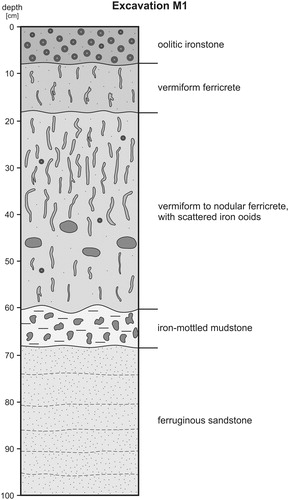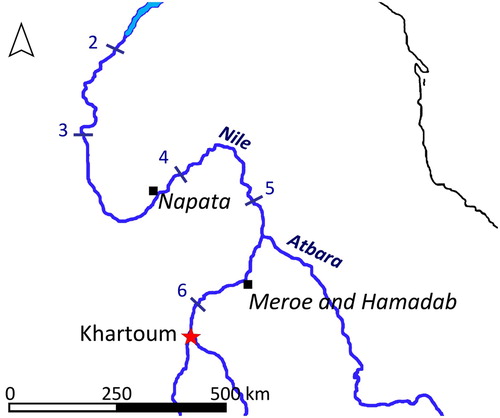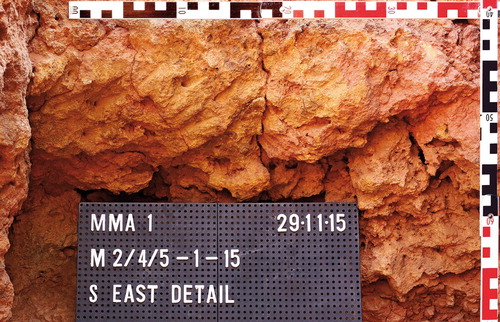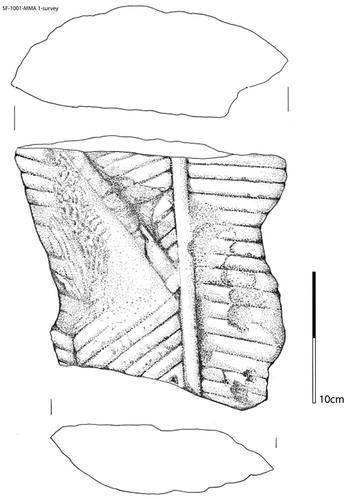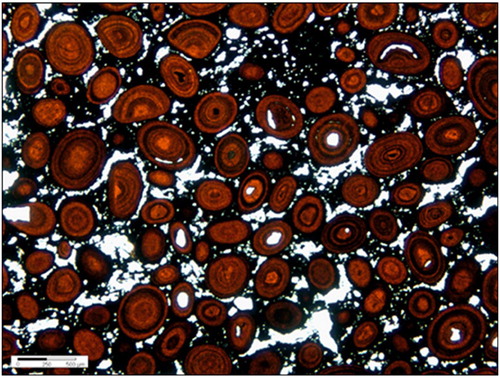Figures & data
Figure 2. Meroe: view from the northern pyramid cemetery to the southern pyramid cemetery, also situated on ferruginous sandstone.

Figure 3. A plateau area to the east of Meroe, with a seasonal wadi bed marked by small outcrops of vegetation.
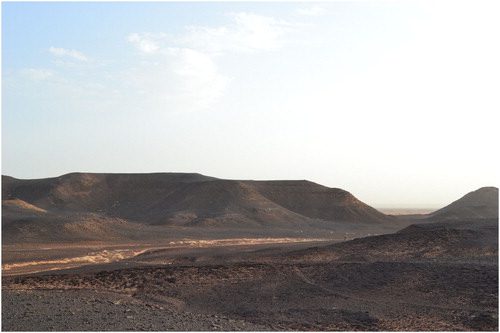
Figure 4. Aerial image of MMA 1. Note the sand-filled depressions pock-marking the plateau (map produced by Frank Stremke).
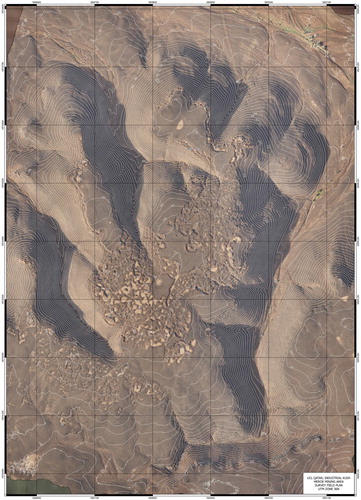
Figure 5. Overview photograph of trench M2-M4-M5, with sediment traps visible in the background and the trench running through sediment traps of differing depths in the foreground.
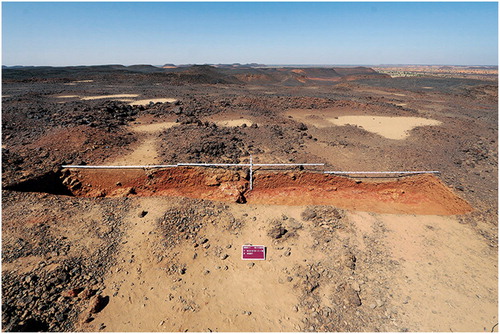
Figure 6. Overview photograph looking south of trench M2-M4-M5 showing the plateau top dotted with sediment traps.
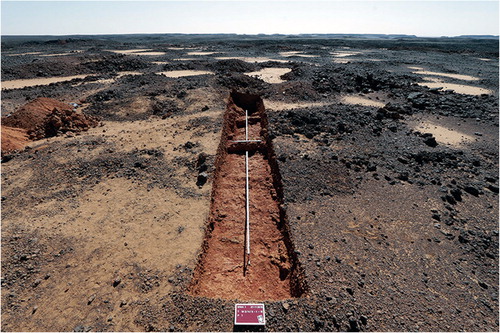
Figure 8. MMA 1: the occurrence of pottery, bricks and iron slag within each of the six grid squares (upper left) and examples of each type of find (iron slag, right; plastered brick, lower left; pottery fragment, lower right).

Figure 9. MMA 1: grid survey results showing the distribution of finds (map produced by Frank Stremke).

Figure 11. Geological section showing the irregular contact of oolitic ironstone and ferricrete in the principal section of the mining area MMA 1 (image created by Robert Bussert).
